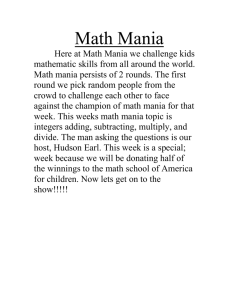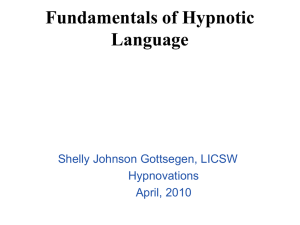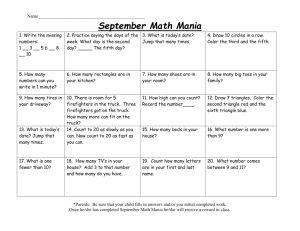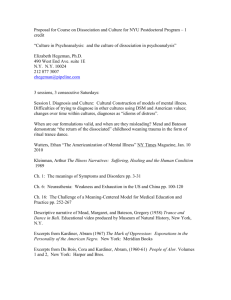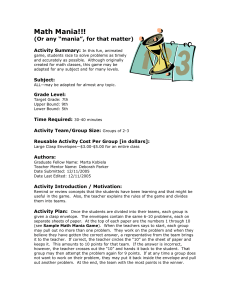mania (madness)
advertisement
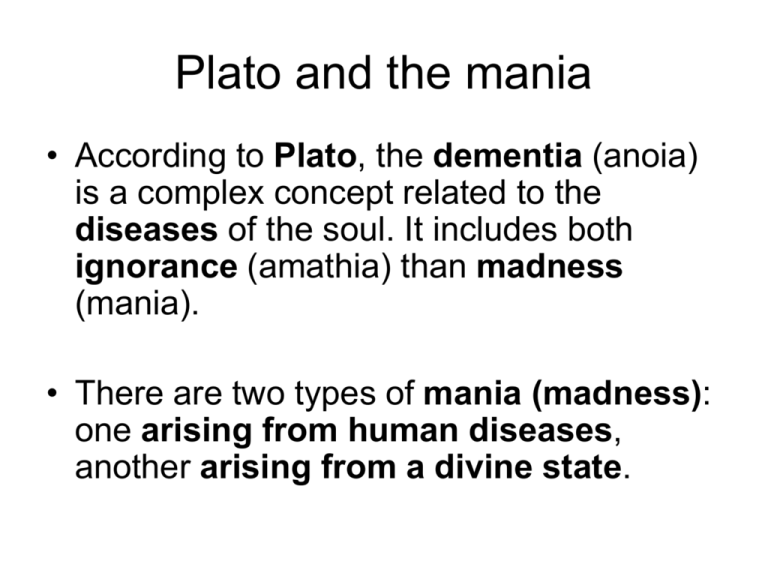
Plato and the mania • According to Plato, the dementia (anoia) is a complex concept related to the diseases of the soul. It includes both ignorance (amathia) than madness (mania). • There are two types of mania (madness): one arising from human diseases, another arising from a divine state. • The divine mania is divided in four different categories, each inspired by different divinities: • mantic mania or mediumship (Apollo) • Telestic or ritual mania (Dionysos) • Poetic and musical mania (Muses) • Erotic or love mania (Aphrodite, Eros) • The divine mania was a positive madness • In the Pheadrus, Plato wrote: • "our greatest blessing come to us by the way of mania, which indeed is a divine gift". • The divine mania gave enthusiasm, that was a signal of the presence of the divinity in the mind of the possessed. • The possessed was called entheos, ”engodded”, ”full of god”: the god was in him. • The possessed was called also mainomenos ”enmadded”: he was prey of frenzy. • The prophetic mania was extremely important • Of the Delphic Pythia and the priestess of Dodona, Plato wrote that ”when they were maianeisai (mad or in trance) they conferred great benefits on Hellas, both in public and in private life, but when they were within their senses few or none”. • Also music and poetry, or the poetic mania, proceed from love madness and from divine enthusiasm. • Socrates (in Plato’s Ion) asks: ”When you recite epic verses correctly and thrill the spectators most deeply … are you not beside yourself, is your soul not transported with enthusiasm?”. • Ion answers: ”Whenever I recite a tale of pity, my eyes are filled with tears, and when it is one of horror or dismay, my hairs stands up on end with fear, and my heart goes leaping”. • Origins of the telestic trance: • people suffers from diseases that are consequences of certain offences to Dionysus • The divinatory trance, for example the mediumship of the oracle of Delphi, discover the origin of the offence and prescribes the right prayers, purifications and rites • the rite brings recovery • who is correctly entranced is released from his troubles • So Dionysus can bring madness, but can also free from the madness that he have caused, by the way of the dionysiac rituals: a kind of controlled and ritualized trance, expressed by dance. Is important that the trance is the correct one, because a spontaneous trance bring only to convulsion, mental confusion and crisis. Signs of telestic trance • • • • Foaming of the mouth Rolled back eyes Flung-back head Arched body • Dance, music Thiasos • The thiasos was a college of possessed women • The telestic trance force the god and the deities to reveal their precence • Their arrival provoke trance • During the trance the possessed was acting imitating the behaviour of gods or their animals Baccheuein • Verb: act as Bacchus / identification with Bacchus / dance as Bacchus • Abstract dance: without figuration, movement of agitation and frenzy • Figurative dance: imitation of Dionysus, pans, satyrs, sileni, oxes, snakes, panthers • According to the healing theories and documents, the telestic trance was a way to heal the soul. • Plato himself in the Laws, tell about the therapeutic elements of the trance dance of the Bacchantes. He pointed out the importance of the movement and melody as a way to heal the child from sleeplessness: the baby who dances, sings and hears music falls out of senses like a bacchant. • An external power (the movement and the shaking of the dance and the music) overpowered the internal movement of fear and craziness. • For Plato is important that the movements followed the divine parts in men: the harmonies and the revolutions of the Universe. • The movement should be harmonic: for this reason also the trance dance should be the correct one. • In Ion Plato tells that the bacchantes had a sharp ear for one tune of the flute: they responded with gesture and speech to this tune. • The tune of the flute is a signal, and the music is only a part of a complex trance ritual, which includes dance, rites, movements, culture, knowledge of the mythical patterns. • The music and dance re-established harmony with the Universe and provoked identification with the god. Gilbert Rouget: Music and Trance • Chapter 5: Music and Trance among the Greeks • Jeanmarie: the Greek and the irrational
